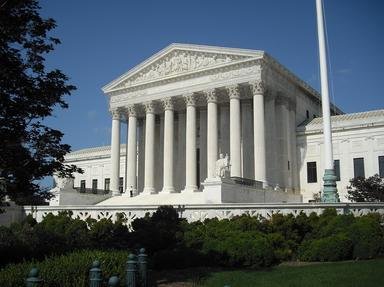Quiz Answer Key and Fun Facts
1. Stephen Breyer attended high school with which colleague, who would later be elected governor of California in 1974, 1978, 2010 and 2014?
2. Breyer's wife, Joanna Freda Hare, is a member of the British Royal Family who removed herself from the line of succession to the British Throne to marry Breyer.
3. Breyer clerked for which Associate Justice of the Supreme Court, who was also U.S. Secretary of Labor and Ambassador to the United Nations, in 1964?
4. In 1970, Breyer wrote a book that was critical of what policy that at the time was controversial and questionable to many people?
5. In 1994, Bill Clinton appointed Breyer to the Supreme Court to replace which liberal justice who authored the Roe v. Wade decision?
6. Breyer wrote the majority opinion for the Court in Tory v. Cochran, a libel case involving former O.J Simpson attorney Johnny Cochran, who sued a former client for libel. Tory, the client, was forbidden to speak about Cochran again as punishment for losing the case. Tory appealed believing the ruling violated his First Amendment right to free speech. How did Breyer rule?
7. Stephen Breyer wrote a dissenting opinion in United States v. Booker in 2005, a case that said that judges did not have to abide by what?
8. Stephen Breyer spent 4,199 days, or nearly eleven and a half years, as what; the second-longest in American history up to that point?
9. Breyer's 2005 book "Active Liberty" is seen as the liberal response to which conservative justice's book "A Matter of Interpretation"?
10. With his dissenting opinion in the 2015 case Glossip v. Gross, Justice Breyer, along with Ruth Bader Ginsburg who joined him, became the first Supreme Court Justice ever to say that the death penalty was unconstitutional.
Source: Author
Joepetz
This quiz was reviewed by FunTrivia editor
stedman before going online.
Any errors found in FunTrivia content are routinely corrected through our feedback system.

